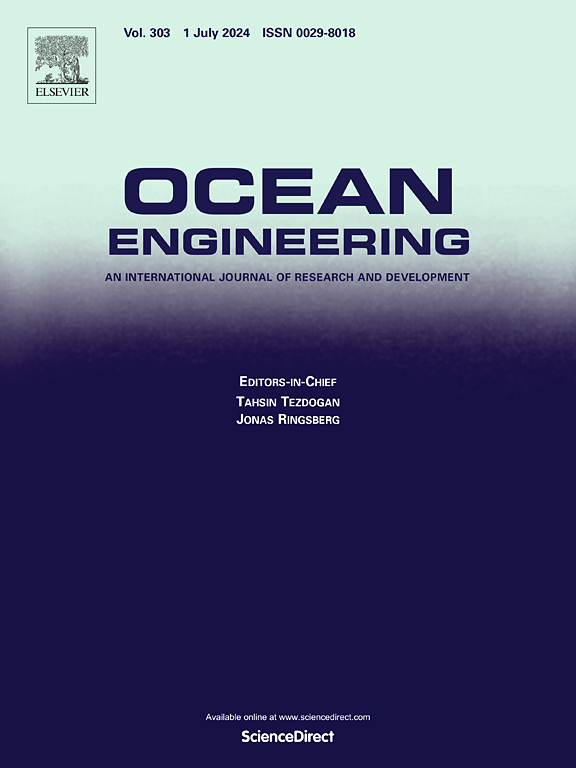Dynamic response of a kelp farm with an HMPE mooring system under wave and current loads
IF 4.6
2区 工程技术
Q1 ENGINEERING, CIVIL
引用次数: 0
Abstract
Large-scale kelp farms play a pivotal role in carbon removal while also providing significant economic benefits of seaweed biomass energy. The rapid expansion of the kelp farming industry, combined with challenges in coastal environmental management, has led to a shift from nearshore to offshore cultivation. To ensure the safety and reliability of offshore deep-water kelp farms, it is essential to investigate the dynamic response of moored kelp farms under marine environmental conditions. In this study, a design analysis framework for constructing large-scale kelp farms is proposed, along with a numerical simulation of a single kelp farm module. First, a method for simulating kelp blades based on the Morison equation is introduced, and a technique for determining the equivalent diameter of the kelp blade is proposed. To evaluate this simulation method, experimental data related to marine vegetation are compared with numerical simulation results. The comparison shows good consistency between the experimental data and numerical simulation results. Next, the design and analysis of moored kelp farms at a depth of 45 m in the eastern Yellow Sea, off the Shandong Peninsula, are conducted under complex marine environmental conditions. The dynamic tension response of key components—including the mooring line, cultivation longline, connecting line, lifting line, and kelp blades—are explored. The safety factors of these components meet the design requirements for kelp farms. Additionally, the displacement response of cultivation longlines and buoys is analyzed, and the designed submersion depth (2 m) of the longline kelp farm is shown to satisfy the requirement that the maximum submersion depth of the kelp holdfast (longline position) does not exceed 4.5 m, which is sufficient to meet the photosynthetic needs of the kelp. The findings demonstrate that all key components of the cultivation structure remain within safe load-bearing limits, providing valuable insights into the design of offshore kelp farm systems.
求助全文
约1分钟内获得全文
求助全文
来源期刊

Ocean Engineering
工程技术-工程:大洋
CiteScore
7.30
自引率
34.00%
发文量
2379
审稿时长
8.1 months
期刊介绍:
Ocean Engineering provides a medium for the publication of original research and development work in the field of ocean engineering. Ocean Engineering seeks papers in the following topics.
 求助内容:
求助内容: 应助结果提醒方式:
应助结果提醒方式:


